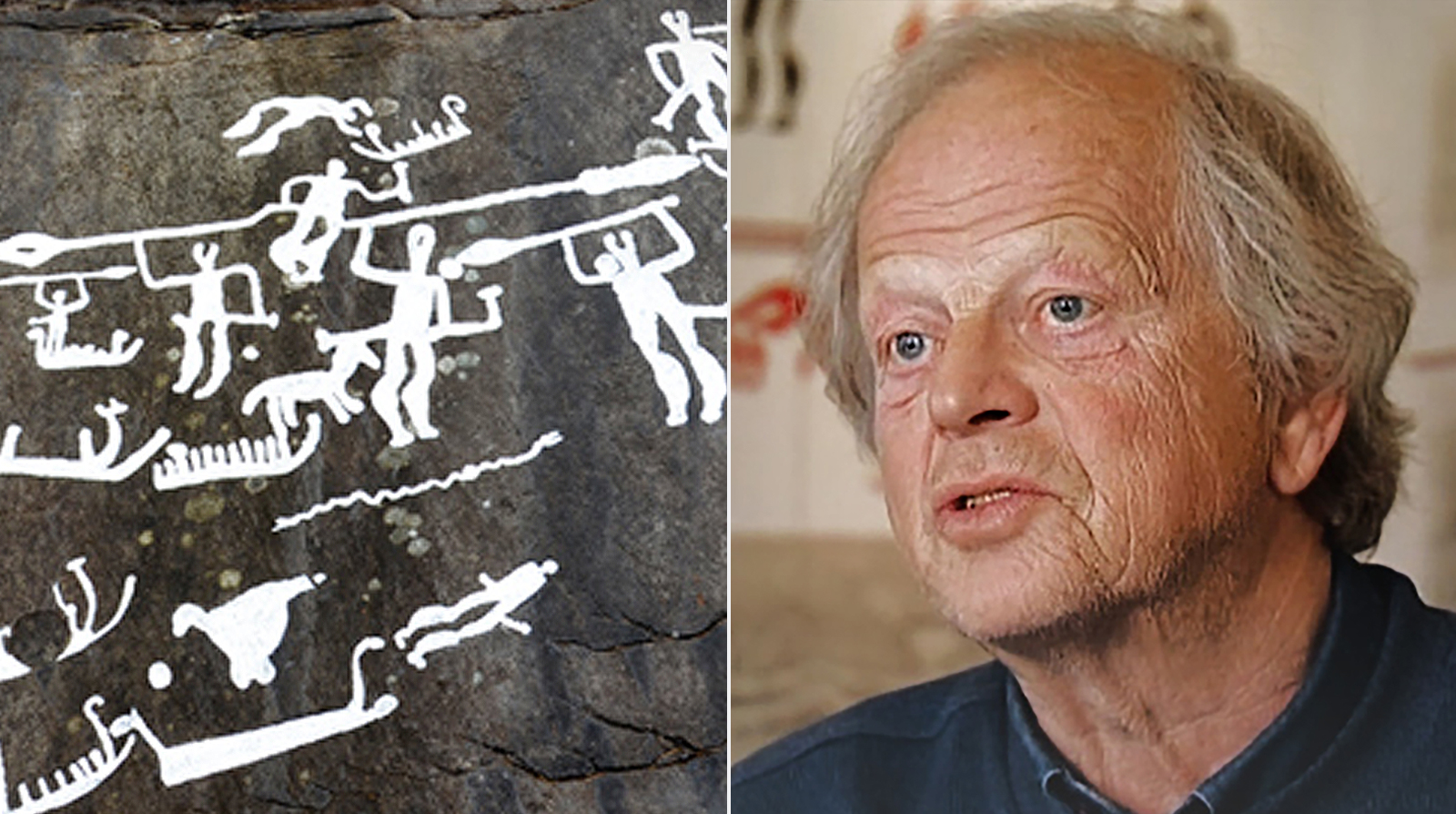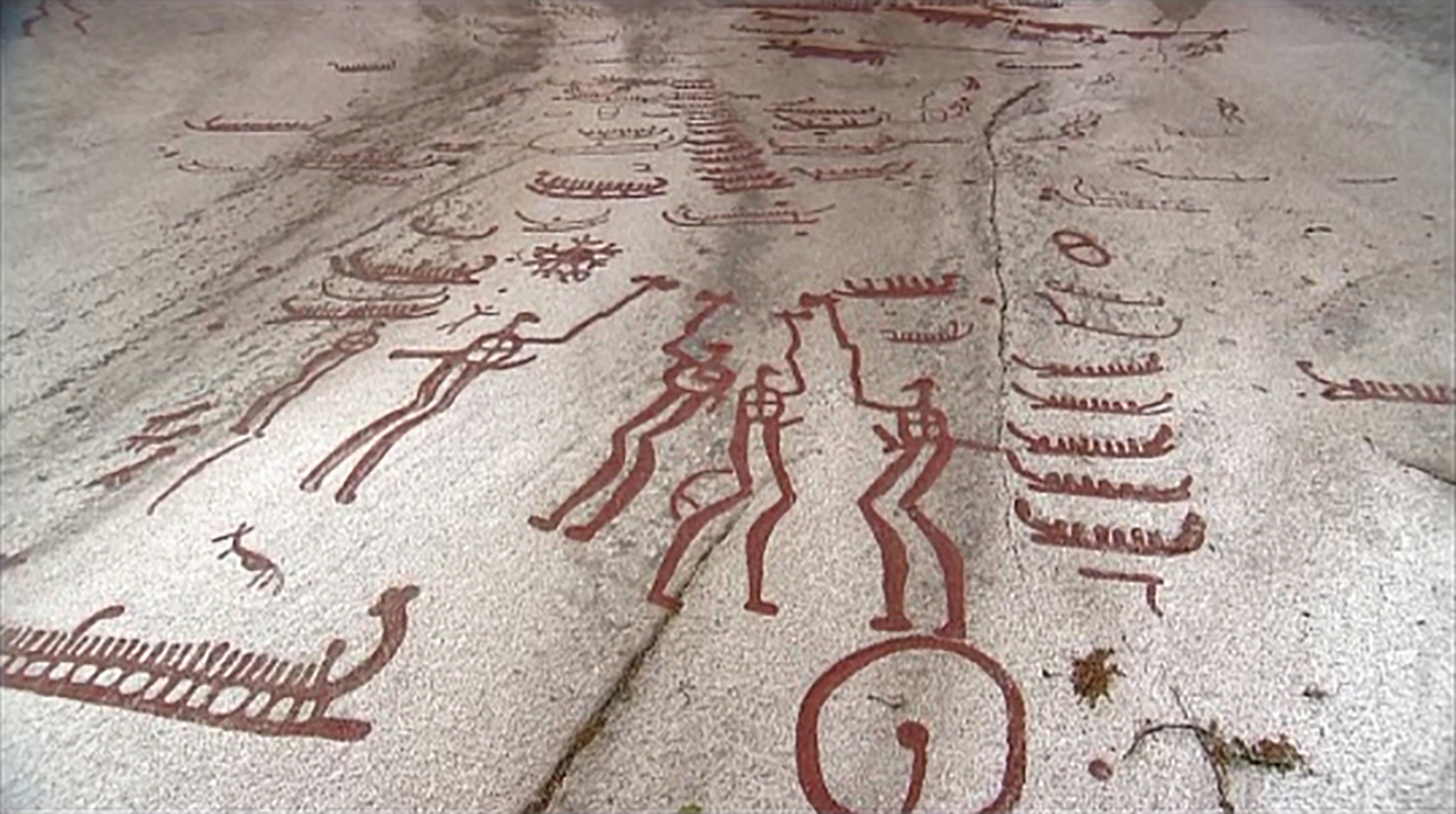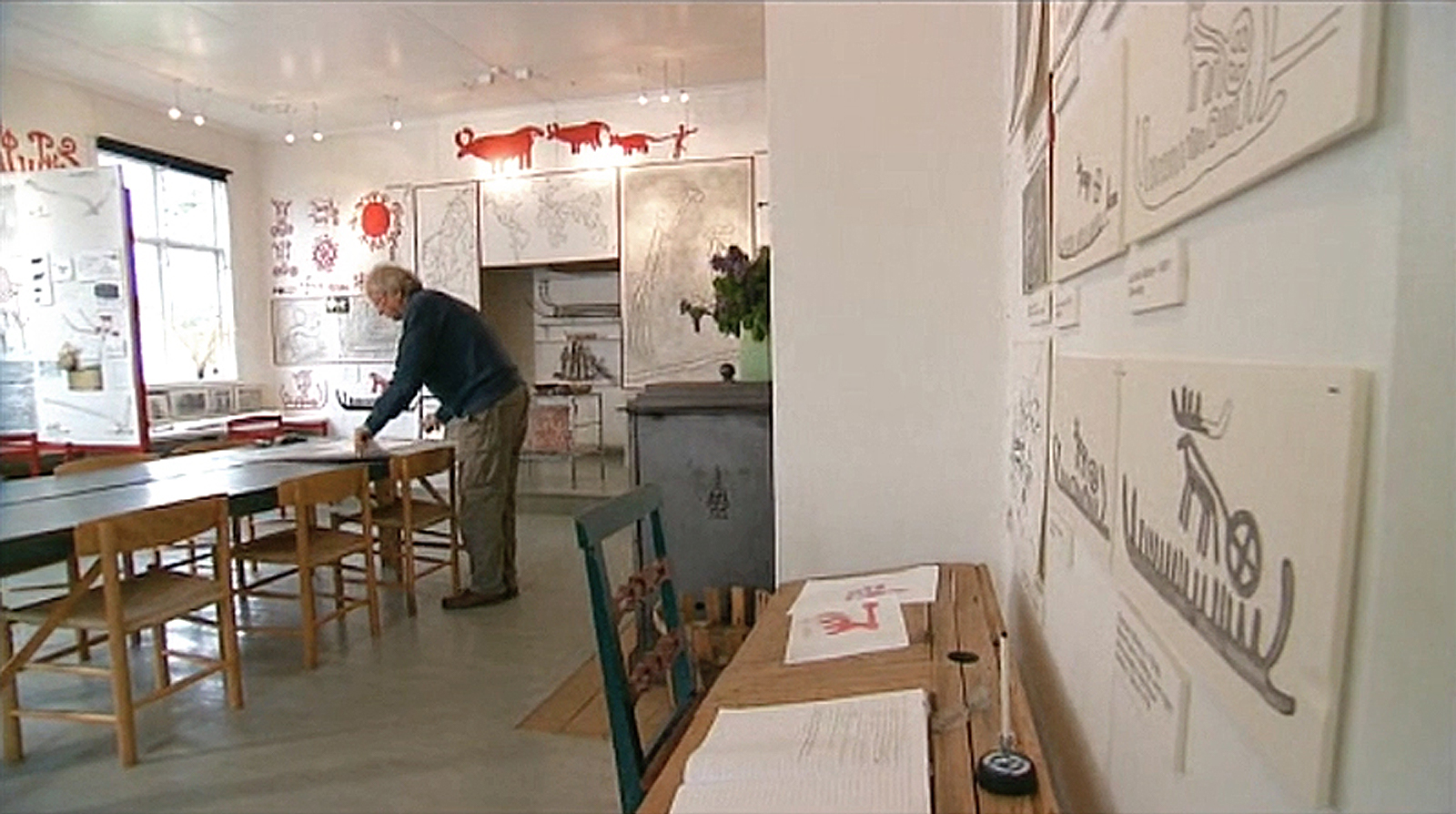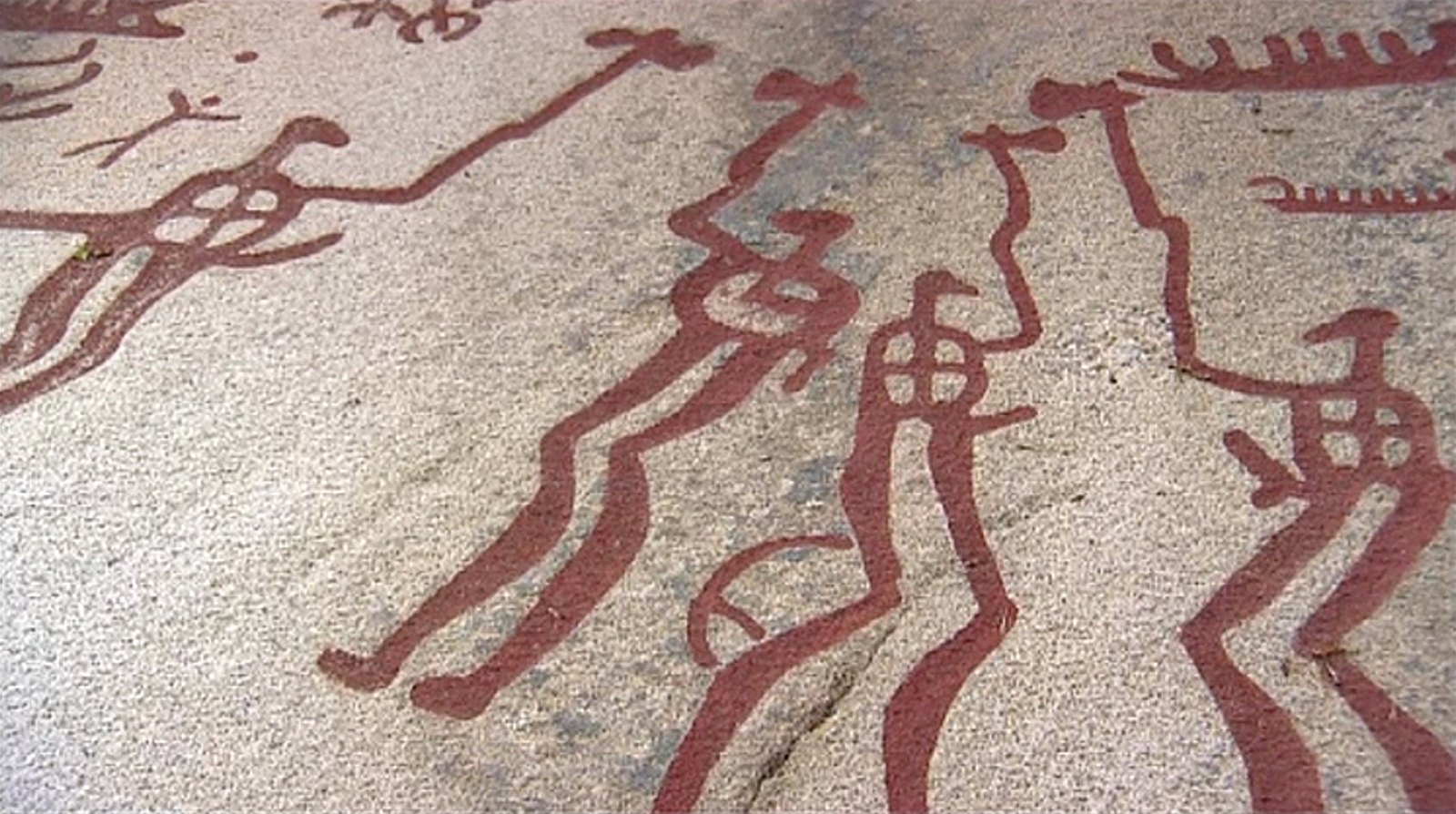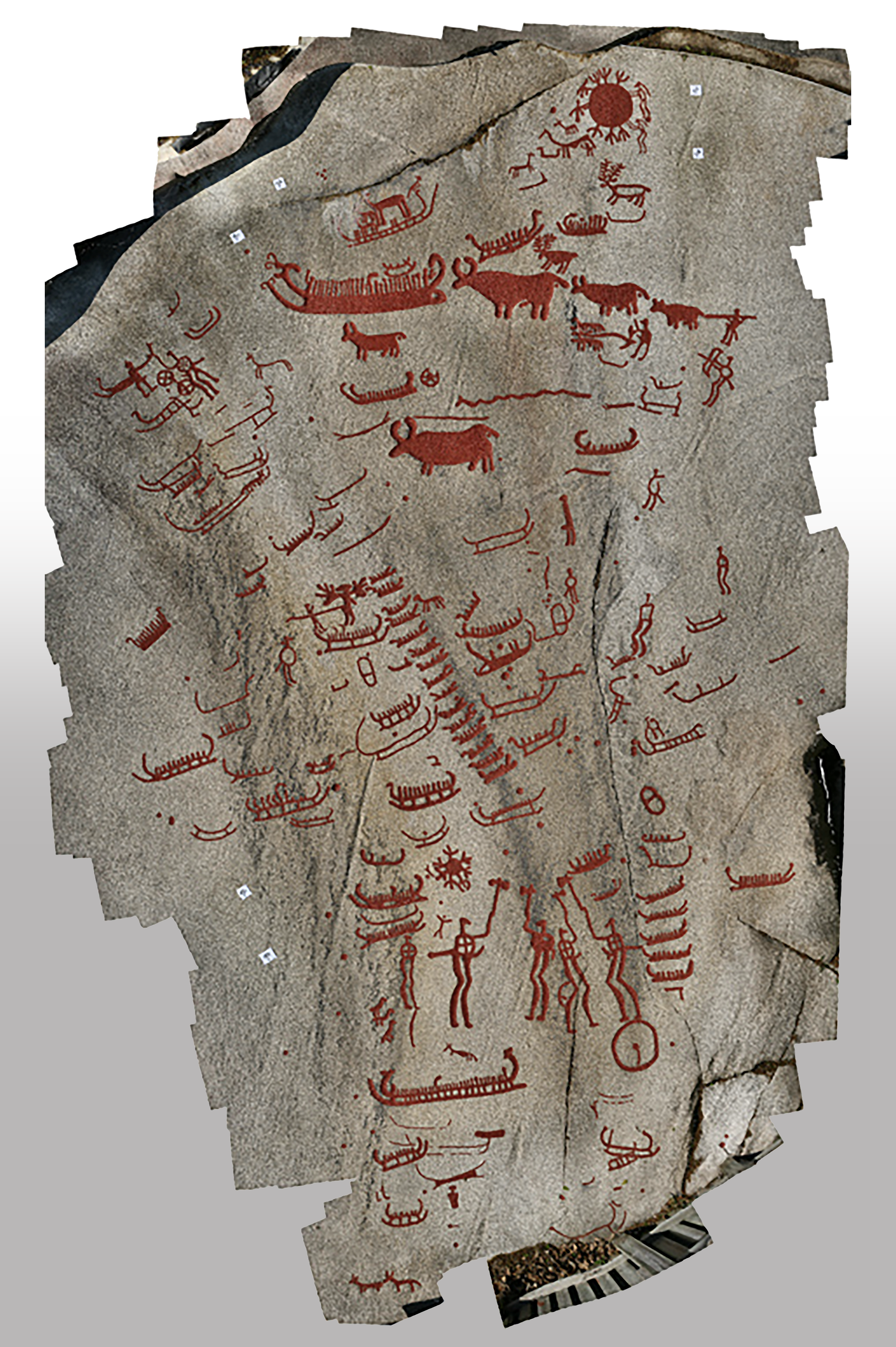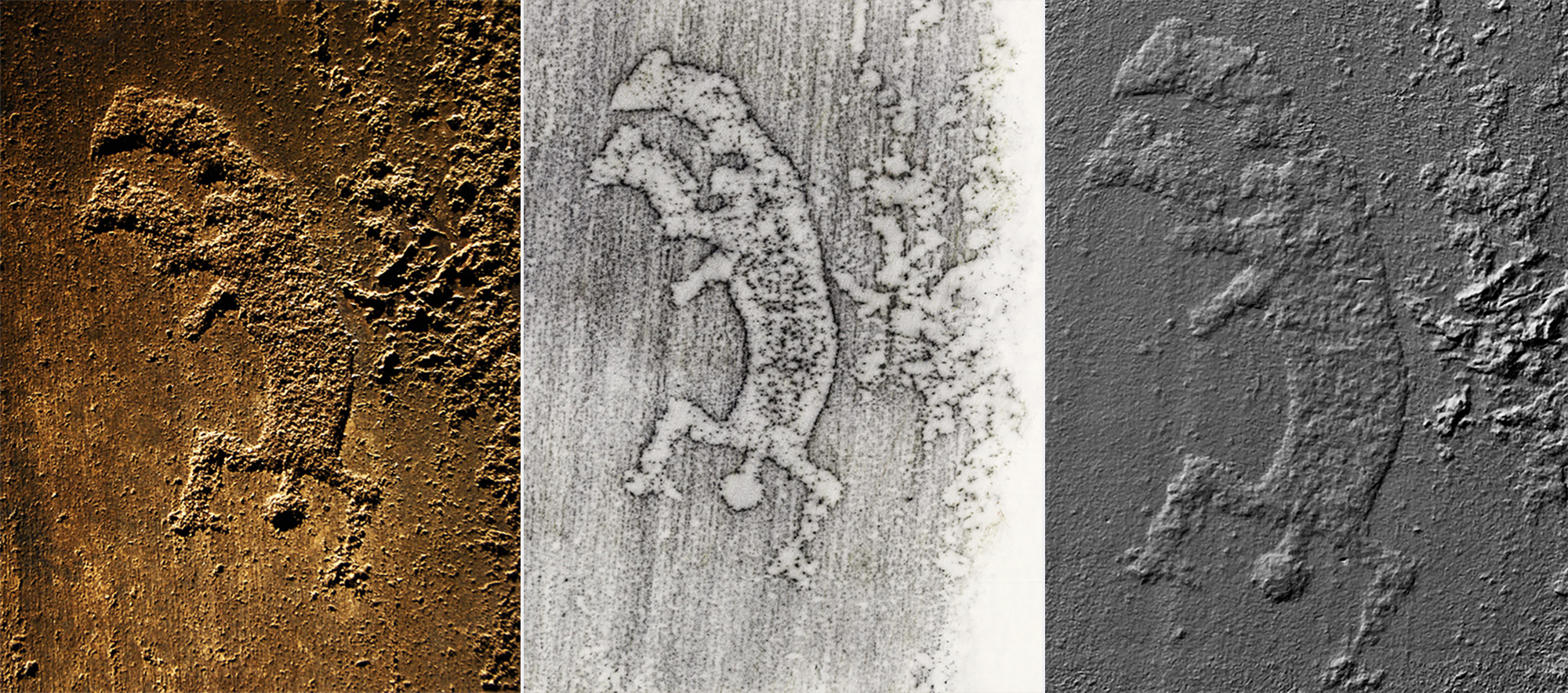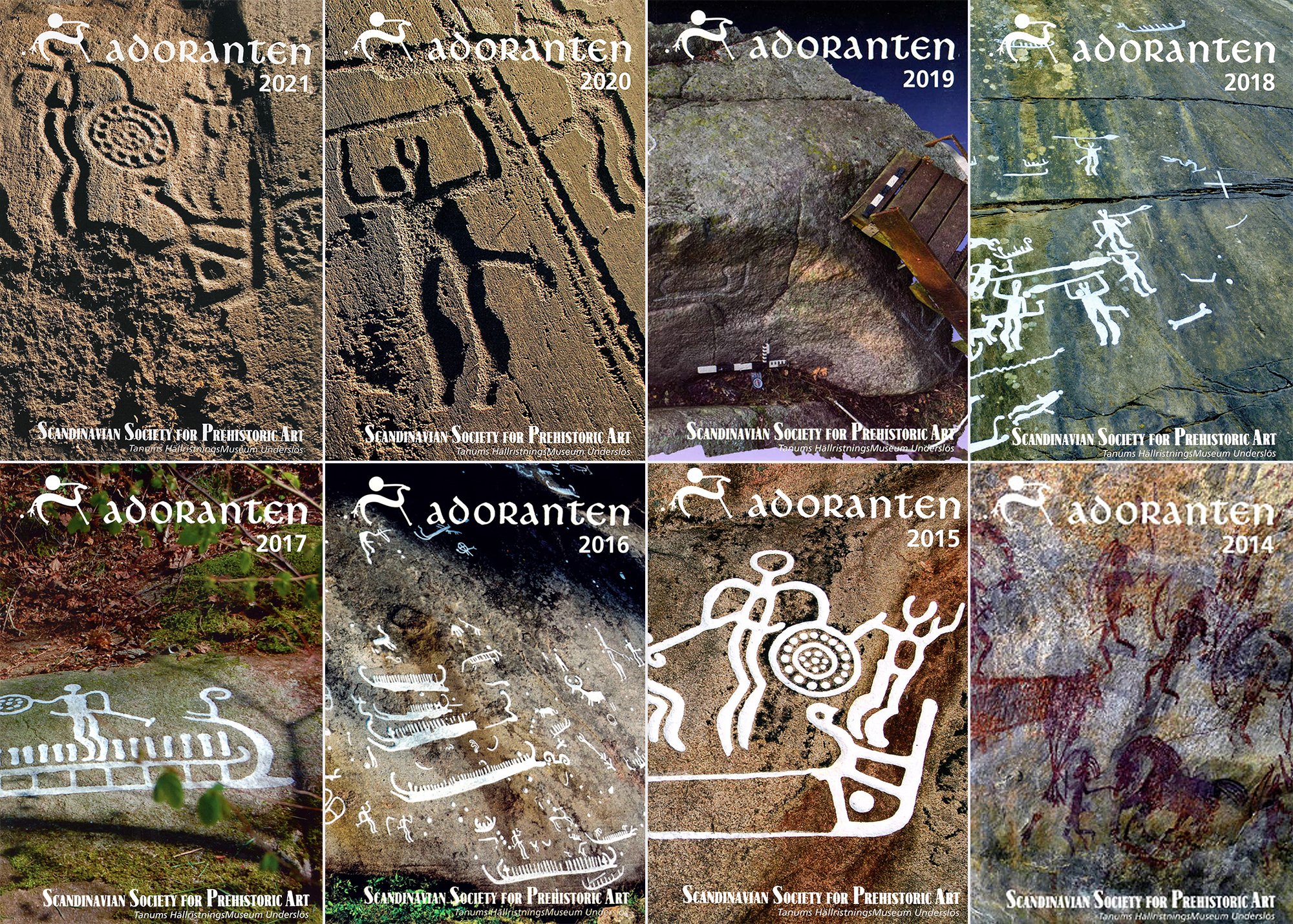The high concentration of petroglyphs at Tanum - near Tanumshede, Bohuslan - has been declared a
World Heritage Site by UNESCO. The site includes one of the largest carved rocks of the Nordic Bronze Age - the 'Vitlyckehal' - in
Scandinavia. The 'Tanum petroglyphs' represent 1000's of images on over 600 panels, concentrated in distinct areas along a 25 km stretch which was originally the coastline of a fjord during the Bronze Age. The site covers an area of about 51 hectares (126 acres). The petroglyphs depict boats (the Hjortspring boat), wagons (or carts), animals, and humans with bows, spears and axes. As well as hunting scenes, human rituals are depicted.
As explained by Dr. Gerhard Milstreu of Sweden’s Tanum Rock Art Research Centre, the beliefs and means of survival provide the basis for these rock carvings and rock paintings. The prehistoric images - rock carvings and rock paintings - are generally categorized according to the subsistence basis depicted: images from the Stone Age are hunter images, images from the Bronze Age are farmer images. Geographically the cultural periods developed differently, homogeneous with the geological and climatic circumstances. The cultures of the Stone Age existed everywhere during prehistoric times, but are now confined to indigenous groups, such as the Inuit, in Canada and Greenland, and the Aborigines, in Australia.
© Tanum Rock Art Museum
© Tanum Rock Art Museum
© Tanum Rock Art Museum
© Tanum Rock Art Museum
© Tanum Rock Art Museum
© Tanum Rock Art Museum
Around 4.000 B.C. a new cultural period arose in Southern Scandinavia - the so called Neolithic period. It was during this period that agriculture first began to arrive in the Scandinavian region from the Middle East, where the earliest origins of domestication have been found. Over time, societies changed drastically - people sometimes call it the largest revolution in the history of mankind: the Neolithic revolution. It marked change from a hunter-gatherer society to a productive society. People settled down and created communities of varying sizes based around arable farming, which enabled a much larger number of people to be fed. As a consequence of the resulting sharp increase in population, cities and city states with production and 'international' trade emerged in the Middle East between 8.000-6.000 B.C.
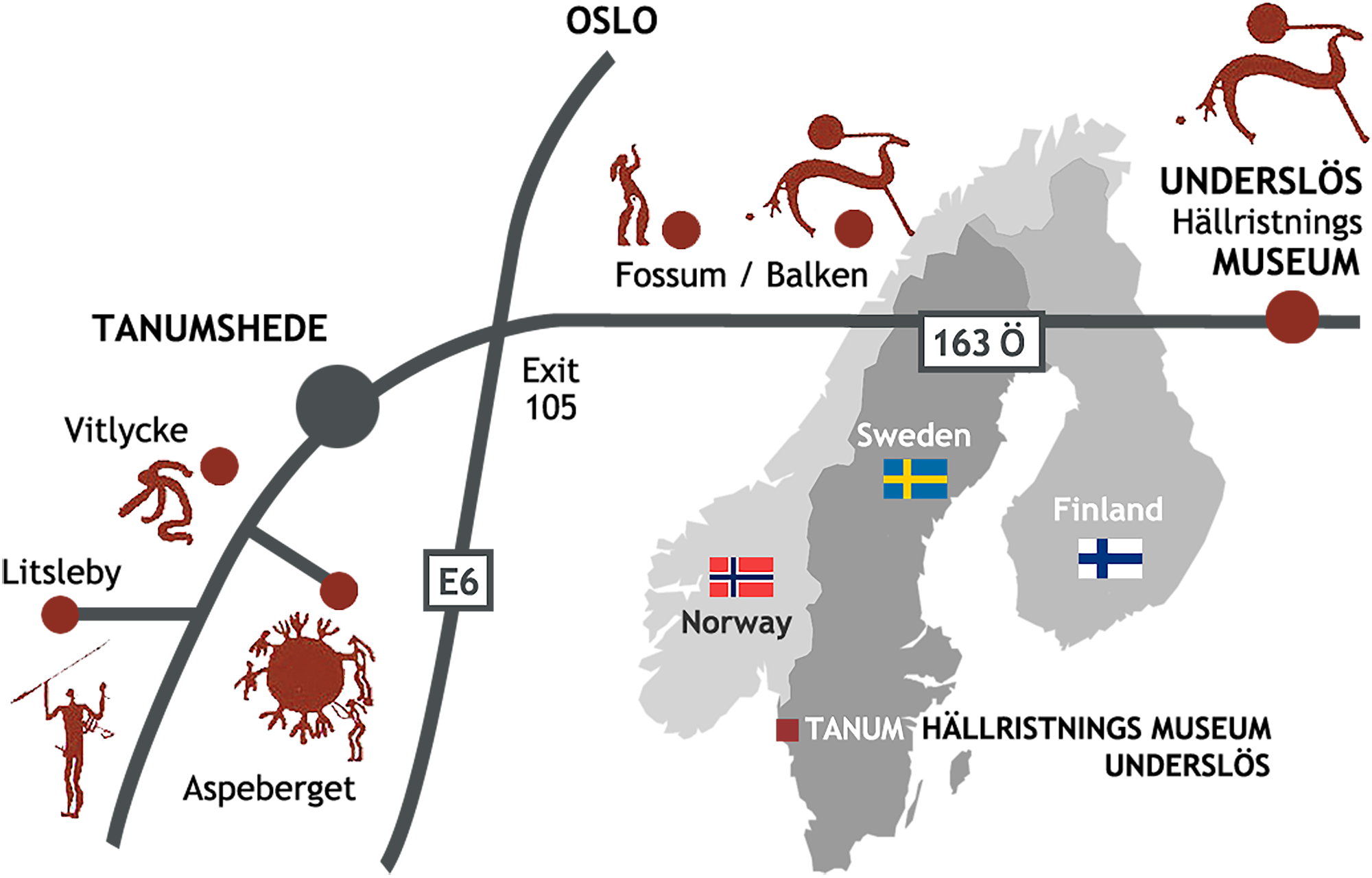
During the Scandinavian Neolithic periods, hunter-gatherer ways of life gave way over time to agriculture. A marked change occurred when the Bronze Age began around 2.000 B.C. During the Bronze Age, the pictorial expression underwent a change in both form and content. The rock carvings from this period are frequently known as farmers carvings. The people practicing agriculture became dependant on different powers compared to those in the past, and the dominating theory is that the carvings describe the religion of the Bronze Age with its myths and rituals, inspired by their way of life. The rock carvings were not 'art for art's sake', but constituted a practical tool to maintain the religious needs and balance within society. The representations are our largest source for our appreciation of their cosmology. They are predominantly pecked in stone, but also appear frequently on metals, bronze and gold, and on perishable materials, such as wood and tattoos on the skin.
The Tanum Museum of Rock Carvings - UNDERSLOS HallristningsMuseum - curates the research and heritage management for the Tanum rock art. The Tanum Museum of Rock Carvings is a non-commercial institution managed by the Scandinavian Society for Prehistoric Art.
Ongoing Rock Art Research and Recording
Scandinavian Bronze Age rock art represents a unique contribution to prehistoric culture, and tens of thousands of localities are known in Sweden,
Norway and Denmark. Cup marks are the most common rock art symbol in the Bronze Age (1700-500 BC) and Pre Roman Iron Age (500-0 BC), on the second place come ships which are depicted during the full length of the period. This means that it probably was an important symbol. This is shown by earlier research and it has been suggested that it probably indicates a society based on maritime mobility. This is in great contrast to older research where you traditionally only saw the Rock Art as picturing agricultural religious beliefs and ceremonials. Depictions of ships comprise over 25% of the Danish rock carvings excluding cup marks, while the corresponding huge amount of ship figures for Sweden and Norway are about 50% and 60% respectively.

Ships are also portrayed on bronze artefacts, such as i.e. razor blades, an important source for dating Rock Art. This shows of a paramount importance and interest in the ship, something that separates them from contemporaneous Rock Art areas in the rest of Europe.
Ship images in Scandinavian rock art
© Tanum Rock Art Museum
Bronze sword with a ship engraving
© Tanum Rock Art Museum
Razor: Ship with s-shaped prows
© Tanum Rock Art Museum
Ship image created during Period III
© Tanum Rock Art Museum
© Tanum Rock Art Museum
© Tanum Rock Art Museum
In this material one can clearly see that a huge number of ship carvings have been changed during prehistoric periods. They have been fully or partly re-cut or “updated”, as it is called here. This update can mean that the ship motifs are supplied with details and/or changed in shape. Ships from Early Bronze Age (EBA 1700-1100 BC) are “updated” to Late Bronze Age style (LBA 1100-500 BC), by changing and/or adding new details. In order to make the ships look like last “trend” so to say.
The aim of this research is therefore to bring the iconographic changes and re-cutting into focus. This study should be seen as the call for a more thorough and detailed ongoing examination, where other images as i.e. weapons must be included. (Gerhard Milstreu, Tanum Rock Art Museum)
| The chronological-typological development of Nordic-Bronze-Age renderings |
 |
| Diagram showing the chronological-typological development of Nordic-Bronze-Age renderings. Left column, datable ships. Wright column ships on the rocks which can be dated by analogy with the ships on bronzes, left. After Kaul 1998. |
| Measured ship depictions in relation to shore displacements |
 |
| Measured ship depictions in relation to shore displacements. After Ling 2008. |
3D Methods as Documentation Technique for Rock Art
Aspeberget Tanum 12 photographed from three levels. The approx. 1200 photographs generates a 3D model of over 650 Mb.
Structure from Motion (SfM) is an user-friendly, low budget way of creating three dimensional models from two dimensional photographs. The method has found its way into the documentation of rock art in recent years. The application on rock art has been developed by the Swedish Rock Art Research Archive (SHFA), primarily in Tanums World Heritage Area. The pilot project, Laser scanning commissioned by Länsstyrelse Väst, (County of Västra Götaland) at Aspeberget was very succesful. It is a non-invasive, objective documentation method that is relatively easy to apply in the field that has the potential to become the standard in rock art documentation in the future.
Whilst it appears that the implementation of 3D documentation within rock art research is still in its infancy, a more elaborate discussion is needed. Nevertheless, there is little doubt that the documentation of rock art through Structure from Motion, or similar methods to create 3D models, has the potential to become the standard for the future. It is a non-tactile, objective and simple method of documentation, which is least harmful to the rock, and will allow researchers to simulate a visit to the site.
At the same time, we should not forget that the obtained result, as with all other methods of documentation, remains only a representation of the original surface, and that the models created can be more detailed and objective than others. Even the ultimate documentation of a rock surface is a reproduction that will reveal inconclusive and / or interpretative details that require more research. No documentation, regardless of its accuracy, will be able to replace the research carried out on the rock itself, particularly finger-tip inspection and the resultant dialogue with the rock surface and its imagery that this skill generates. (Ellen Meijer, Tanum Rock Art Museum).
'The Acrobat' from Aspeberget (Tanum 14) reproduced with the three objective documentation methods: night photography (left), rubbing (center) and SfM (right). Each show a similar amount of information.
© Ellen Meijer, rubbing: Tanums Hällristningsmuseum Underslös, SfM: SHFA, Ellen Meijer
Gallery
© Tanum Rock Art Museum
© Tanum Rock Art Museum
© Tanum Rock Art Museum
© Tanum Rock Art Museum
© Tanum Rock Art Museum
© Tanum Rock Art Museum
© Tanum Rock Art Museum
© Tanum Rock Art Museum
© Tanum Rock Art Museum
© Tanum Rock Art Museum
© Tanum Rock Art Museum
© Tanum Rock Art Museum
© Tanum Rock Art Museum
© Tanum Rock Art Museum
© Tanum Rock Art Museum
© Tanum Rock Art Museum
© Tanum Rock Art Museum
© Tanum Rock Art Museum
Adoranten
The Scandinavian Society for Prehistoric Art and the Tanum Museum of Rock Carvings publishes the annual magazine Adoranten, edited by Dr. Gerhard Milstreu. Adoranten is an international peer reviewed rock art magazine and has been published annually since 1970. Now published in 26 countries, it is distributed to museums, universities, archaeologists and members of the Scandinavian Society for Prehistoric Art. Adoranten focuses on the presentation of world-wide prehistoric iconography, recent research, excavations and archaeological context.
→ Adoranten - International Rock Art Magazine
The Scandinavian Society for Prehistoric Art and the Tanum Museum of Rock Carvings publishes the annual magazine Adoranten, edited by Dr. Gerhard Milstreu.











